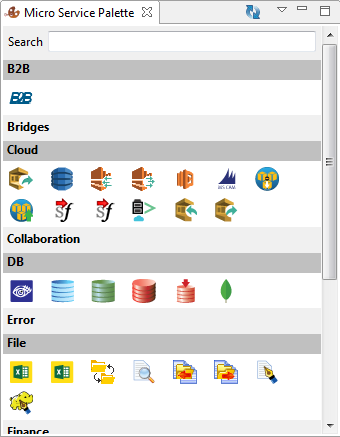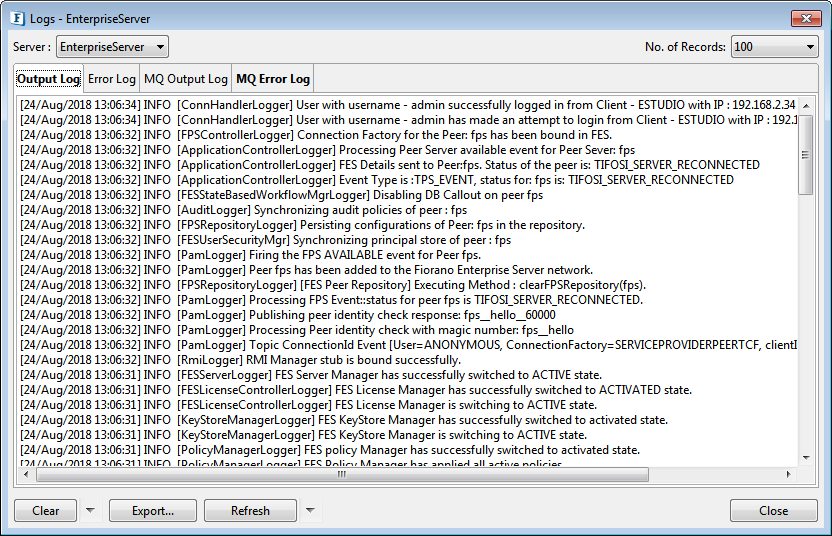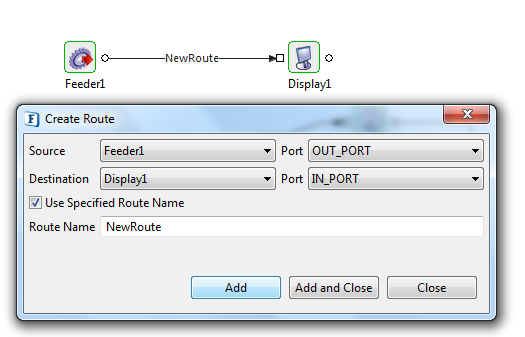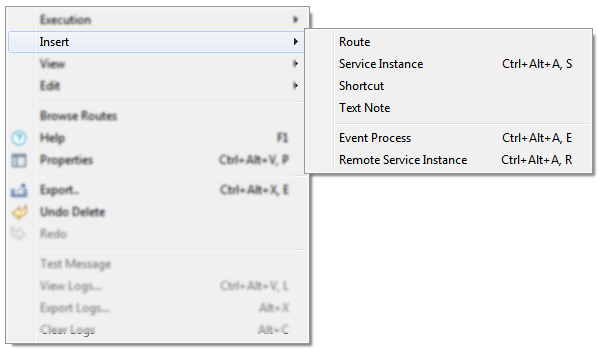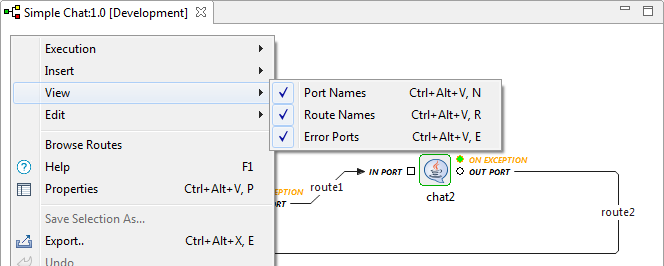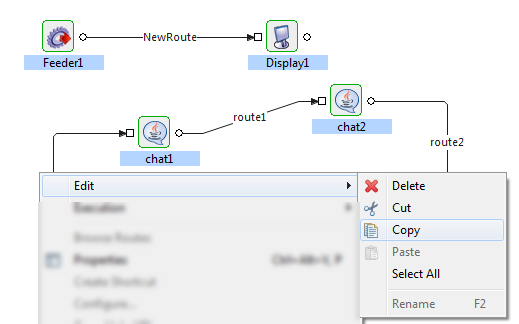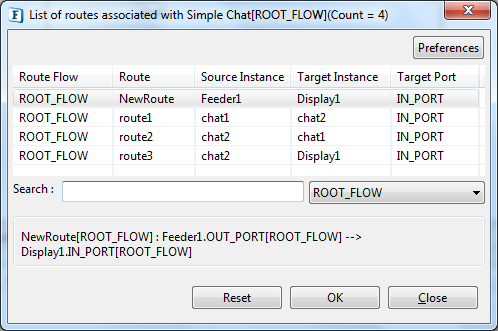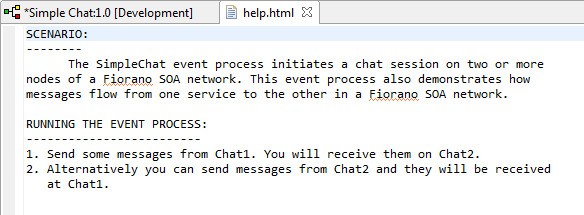Server Explorer
Enterprise Server
Before logging in
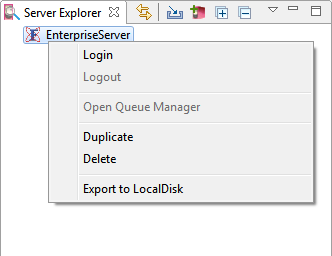
| Option | Description |
| Login | Provide credentials (Default: admin/passwd) to login to the Enterprise Server. |
| Duplicate | To create a copy of the Enterprise Server. |
| Delete | To delete the duplicate of the Enterprise Server or an added server. |
| Export to Local Disk | To save the server with all configuration changes as made. This is performed when the server with a customized configuration has to be used on another instance or a future point of time. |
After logging in

Below descriptions explain the options excluding the ones mentioned in the Enterprise Server before logging in section above.
| Option | Description |
| LogOut | To log out from the logged in Enterprise server. |
| Open Queue Manager | Fiorano Queue Manager tool provides a single view to see all the pending messages in an Event Process. |
| Shutdown | To stop the running server instead of performing it from the command prompt. |
| Restart | It shuts down the running server and restarts. |
| Clear Logs | To delete Output and Error logs pertaining to the Enterprise Server. |
| Export Logs | To save the Enterprise Server logs for future reference or analysis. |
| View Logs | Displays the various message logs in segregated by tabs. |
| Activate | To explicitly activate an inactive server; this option gets enabled in scenarios where multiple servers are running. |
Event Process Repository
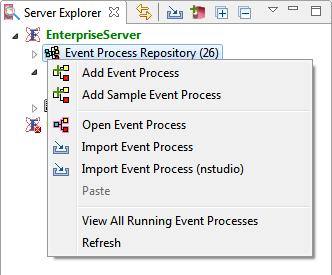
| Option | Description |
| Add Event Process | To add a new event process to the Event Process Repository. |
| Add Sample Event Process | To open a pre-configured sample event process from the ones which are shipped with the Fiorano installation |
| Open Event Process | To open an already saved event process. |
| Import Event Process | To add an Event Process that is saved in a local disk or a server. |
| Import Event Process (nstudio) | To add an Event Process that is exported from nStudio. |
| View All Running Event Processes | To view all the running processes consolidated in a single window. |
Folder in the Event Process Repository

| Option | Description |
| Add Event Process | To add a new event process to the category under Event Process Repository. |
| Delete | The Delete option helps to remove both or one of the below from the particular folder:
|
Event Process
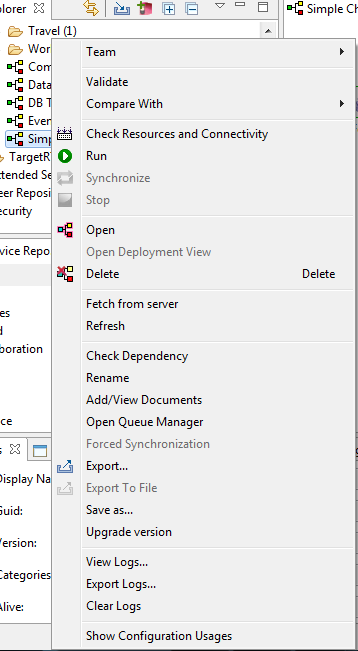
| Option | Description |
| Team |
|
| Validate | To validate resources attached to the event process. |
| Compare With | To compare with 2 or more event processes; select the event processes to be compared before choosing this option. |
| Check Resources and Connectivity | To do a connectivity and resource check for the Event Process. Refer to the respective section in the Running an Event Process section. |
| Run | To launch the event process after checking resource connectivity. Refer to the Launch Event Process section in the Running an Event Process section. |
| Synchronize | To modify running applications on the fly. Refer to the Synchronizing an Event Process section in the Running an Event Process section. |
| Stop | To stop a running event process. Refer to the Stopping an Event Process section in the Running an Event Process section. |
| Open | To open an event process for editing. |
| Delete | To delete an event process or SBW events in the event process. Refer to the description in the Folder in the Event Process Repository in the Running an Event Process section. |
| Fetch from Server | |
| Check Dependency | To check whether there is any dependency attached to jar files DLLs, property files etc. |
| Refresh | To apply any changes done to the event process. |
| Rename | To rename an event process. |
| Add/View Documents | To add additional information or any particular remarks regarding an event process and attach as a document to the Event Process for future reference purposes. Refer to the Adding Documents to an Event Process section for detailed information. |
| Open Queue Manager | To provide a single view to see all the pending messages in an Event Process. Refer to the Fiorano Queue Manager section. |
| Export | To save the event process as a zip file in the desired location. Refer to the Exporting an Event Process section. |
| Save As | To create a copy of an event process. |
| Upgrade Version | To create a different version of an event process. |
| View Logs | To check Output and Error logs of service instances in the event process. |
| Export Logs | To export logs of service instances in the event process. |
| Clear Logs | To remove the event process logs. |
Event Process
Fiorano Orchestrator
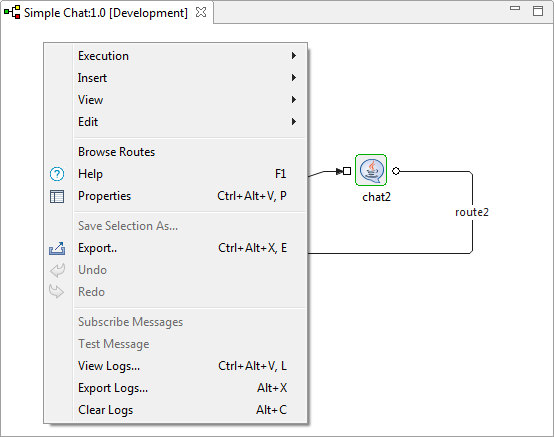
| Option | Description |
| Execution |
|
| Insert |
|
| View |
|
| Edit | To cut, copy, rename or delete a service instance, select the service instance and select the required option. To select all service instances, click Select All.
|
| Browse Routes | To list the routes involved in the event process. The categories to be listed may be customized by clicking the Preferences button.
|
| Help | To view the scenario and steps for the sample event process.
|
| Properties | To display the Properties panel. |
| Export | To export the event process. |
| Undo | To undo the last action. |
| Redo | To redo the action which underwent undo action. |
| View Logs | To view output and error logs for the event process. |
| Export Logs | To export logs related to event process. |
| Clear Logs | To clear all logs pertaining to the event process. |
Closing Windows
When multiple windows are opened in eStudio, it may be closed using the following options:
- Close: Closes the selected event process.
- Close Others: Closes all other event processes other than the selected one.
- Close Tabs to the Left: Closes the windows on the left side of the selected event process.
- Close Tabs to the Right: Closes the windows on the right side of the selected event process.
- Close All: Closes all event processes including the selected one.


Service Instance
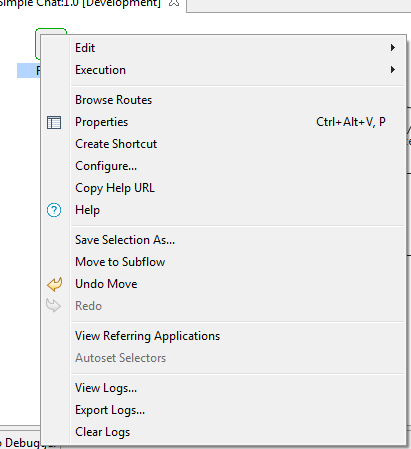
| Option | Description |
| Edit | To cut, copy, rename or delete a service instance. |
| Execution | To stop or start a launched service instance. |
| Browse Routes | To list the routes involved in the event process. The categories to be listed may be customized by clicking the Preferences button. |
| Properties | To display the properties panel. |
| Create Shortcut | To create a shortcut for the service instance. |
| Configure | To launch/open the CPS of the microservice to view/edit configuration. |
| Copy Help URL | To copy the Online Help page URL for the respective service instance. |
| Help | To open the Online Help page for the respective service instance. |
| Save Selection As | To create a separate event process using the selected service instance. |
| Move to Subflow | To create a subflow using the selected service instance. |
| Undo | To undo the last action. |
| Redo | To redo the action which underwent undo action. |
| View Referring Applications | To see whether any application is using the service instance as a remote service instance. |
| Autoset Selectors | To define Selectors on the output port(s) of the service instance. |
| View Logs | To view output and error logs for the event process. |
| Export Logs | To export logs related to event process. |
| Clear Logs | To clear all logs pertaining to the event process. |
Micro Service Palette
Context menu in the Micro Service Palette has options to change the layout of microservices under each category.
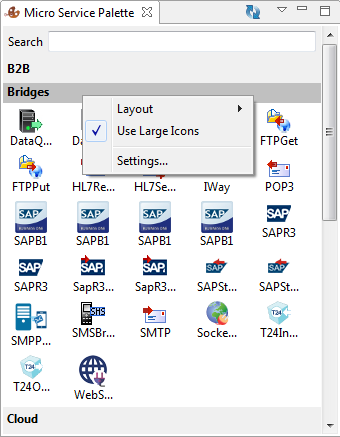
Layout
- Columns is the default option (see the figure above).
- List
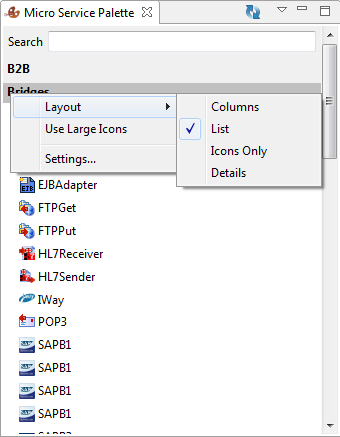
- Icons Only: Does not show the name or description of the microservice.
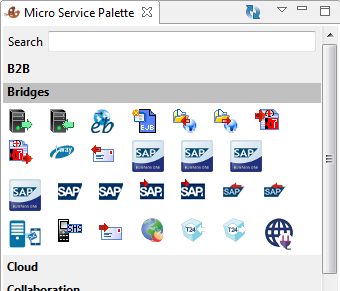
- Details: Displays description of each Microservice
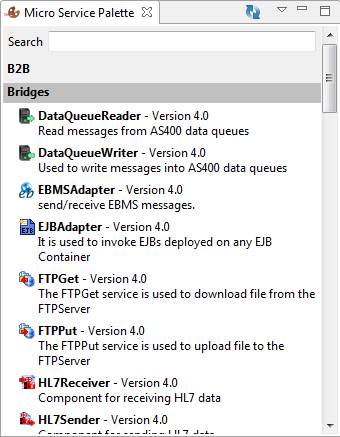
Use Large Icons
Deselect this option to make the icons smaller in size.
Settings
Palette Settings dialog box includes the above mentioned options.
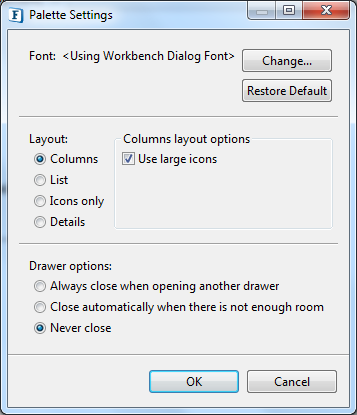
Other than layout options and the option to make the icons small/big, it has the options to change the font for descriptions, the option to restore to default settings, and to change the display of categories as mentioned below:
- Always close when opening another drawer: Closes the opened category when another category is expanded.
- Close automatically when there is not enough room: Closes the opened category when there is no space available after another category is expanded.
- Never close: Keeps the opened category opened itself even when another category is open.
